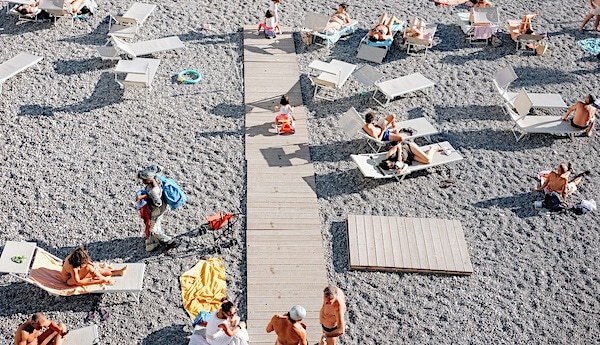
Unprecedented border closures and the domestic lockdown have paralysed New Zealand’s $40.9 billion a year tourism industry. In the process, the vulnerability of the sector to external shocks and the tenuous nature of tourism employment have been exposed.
While New Zealand’s handling of the pandemic has been hailed as a global masterclass, and the prospect of travel bubbles promoted as a way to restart the tourism economy and save jobs, it is clear there is no quick fix.
The inherent dangers of reinfection from travel to and from countries with uncontrolled community transition, and the challenge of protecting New Zealand’s borders, mean international tourism is grounded for the time being.
Nevertheless, planning for recovery is underway. The United Nations World Tourism Organisation (UNWTO) wants to restore confidence and restart tourism without delay. The European Union recently opened its borders to travellers from certain countries, including New Zealand.
But the proposed trans-Tasman and Pacific bubbles will likely be among the first safe international travel zones in the world.
A Tasman-Pacific bubble is good for the planet
The economic benefits are obvious. A recent study using UNWTO data identified Australian tourists, who spend on average $7,490 on holidays, as the top spending tourists in the world. Of the 3.8 million international tourists who visited New Zealand in 2018, nearly 40% were from Australia.
By the end of 2019, Australian tourists had spent $NZ 2.5 billion in the New Zealand economy. Of course, that figure is offset by the $NZ 1.6 billion spent by Kiwis visiting Australia in 2019.
Simply wishing for a return to normal, however, is not enough. The tourism rebuild must negotiate a delicate balance between immediate recovery and long term sustainability. A new steady-state equilibrium that generates employment and income while driving down tourism carbon emissions is required.
Prior to the COVID-19 pandemic it was widely recognised that the global tourism system is economically and environmentally flawed. Our research has highlighted three main structural failures:
- low value (caused by growth in arrivals combined with declining spending)
- economic “leakage” (due to outbound tourism and the concentration of profit flowing to a few global players)
- high carbon emissions (from high-carbon transport dependence, increasing distance of travel and falling average length of stay).
Reducing travel distances is key
In the case of a geographically distant destination like New Zealand, there is no ignoring the last of those problems, as a report by the New Zealand Parliamentary Commissioner for the Environment highlighted in late 2019.
The fact is, high carbon emissions are embedded in New Zealand’s tourism GDP. In the rebuild we must commit to measuring the carbon footprint of tourism, and actively manage forms of tourism that come with a disproportionately high carbon cost.
In practice, this will mean more tourism from the regional medium-haul markets that fall within the proposed Australia-New Zealand-Pacific travel bubble. Increasing reliance on Australian states rather than long-haul markets will result in a dramatic reduction in carbon emissions per dollar of tourism GDP.
Research published in 2010 showed that while Australian tourists made up 37% of international visitors to New Zealand they were responsible for 13% of air travel emissions. By contrast, visitors from Europe made up 18% of total visitors but 43% of emissions.
Fewer long haul arrivals, more Australian tourists, more domestic tourism and less outbound travel will dramatically reduce tourism carbon emissions.
COVID-19 has already kickstarted the domestic part of this equation. New Zealand hasn’t targeted local tourists since 1984’s iconic “Don’t leave town till you’ve seen the country” campaign. But the regions are now competing for the roughly 60% of all tourist dollars that New Zealanders spend in their own country each year.
The closure of international borders has also, for now, stopped the significant economic drain caused by outbound travel. In 2019 Kiwis spent nearly $5 billion travelling overseas.
Time to stop marketing long-haul tourism
Most trade (including tourism exports) comes from markets closest to us. It is much cheaper to trade with neighbours, and it is far more sustainable to have tourists arrive from closer rather than distant countries.
New tourism models have to be found that can reduce the sector’s emissions while maintaining as much as possible its income and employment benefits.
Tourism carbon analysis is likely to point towards the growing importance of long-stay visitors, such as international students, who already provide 23% of total international tourist spending in New Zealand.
Equally it will be necessary to “de-market” and reduce long-haul, high-carbon, short-duration, and low economic yield tourist arrivals. Passengers who arrive on enormous carbon intensive cruise ships – 9% of visitors but only 3% of tourism earnings – fall firmly into the least desirable category.
An Australia-New Zealand-Pacific travel bubble clearly fits the new model. The tourism rebuild must involve all measures being taken to create a high-value, low-leakage and low-emissions tourism future.
James Higham, Professor of Tourism, University of Otago
This article is republished from The Conversation under a Creative Commons license. Read the original article.
Blijf op de hoogte met de nieuwsbrief. Meld je hier aan.
( Je kunt ons ook steunen door lid te worden of te doneren )







